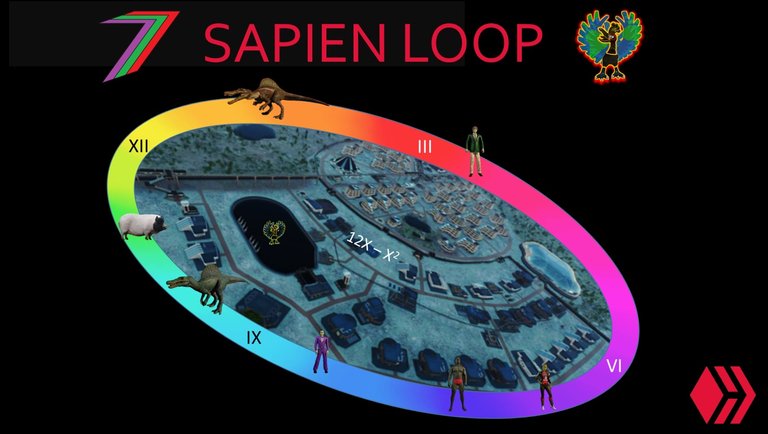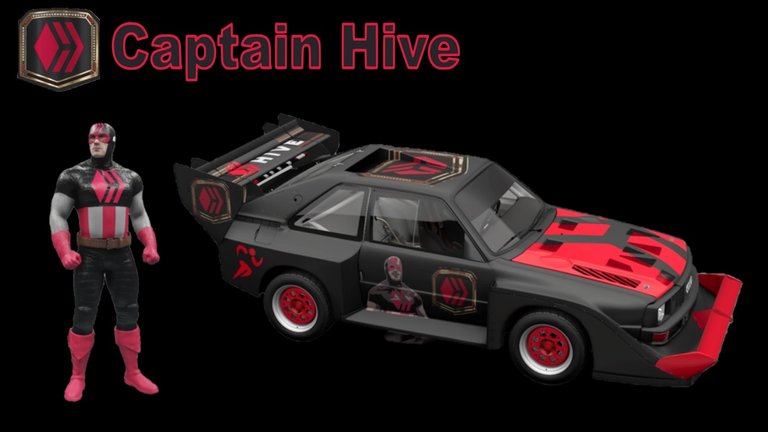
Chapter 3: Locations

There were many regions located across Sapey. Some were large, but most were small. Despite the large number of regions, there were only a few different types of regions. They were the standard small regions, the small agricultural regions, the small mining regions, and the large regions.
Small Regions
The small regions consisted of several different zones. There was a centralised urban area. Outside of the urban area were the agriculture zone and the industrial zone.
Centralised urban areas consisted of the residential zones. This was where most of the Sapiens of that region lived. The urban areas also contained the business and commercial zones. Public services such as schools, childcare, training centres, and local House of Divine Knowledge centres were located throughout the urban areas.
The agriculture zone provided sufficient food for local restaurants. Some of the vegetables were provided as ‘rights’. Most food was imported from the large agriculture zones. The industrial zone provided products to be sold as ‘privileges’ to residents. They were also used to provide storage for products delivered from other regions.
The industrial zone was where research laboratories, construction companies, power plants, and water treatment facilities were located. Most small regions specialised in a few manufactured products. These were exported to other regions. Most ‘rights’ were imported from large regions or regions that were more dedicated to manufacturing.
Small regions had two forms of transportation. They were the city transport line, often referred to as the RollerSphere, and the intercity transport line, often referred to as the Sapien Loop. The city transport line formed a circle around the residential, business, and commercial zones. The intercity transport line connected different regions together.
Small regions had only one line in and out. Express trains that did not stop, passenger trains that stopped at all stations, and freight trains that stopped when necessary used this line. There were small freight lines for transferring resources to the intercity line.
Small agricultural regions were very similar to the small regions. The key differences were the extended agriculture zones, additional small freight routes used to reach the other agricultural regions, the absence of a city transport line, and a much smaller industrial zone.
These regions had larger agriculture zones within the walls that were dedicated to meeting the needs of the region. Sapiens could be granted work permits to work outside the region in the vast Central or Southern Agriculture Zones. The food collected was mostly exported to other regions. Almost all manufactured goods were imported from other regions. The industrial zone only served the very basic needs of the region. It offered storage for goods, water treatment, energy, and a basic medical laboratory.
Small mining regions had a similar layout to the other small regions. The agricultural zones were replaced by resource extraction zones. All food was imported from other regions. Mining regions also had larger industrial zones. They were dedicated to providing all manufactured products to their region as well as some for export to other regions.
Large Regions
Large regions were constructed very differently from small regions. At the centre of the region was the city centre. It was where government bodies, business headquarters, media headquarters, and economic institutes were located.
Located around the centre was the residential zone for Government, business, financial, theology, and media leaders. Located around the residential zone were the business and commercial zones. Located around the business and commercial zones was the residential zone for the remaining residents. Located around the residential zone was the agricultural zone. Both Sapiens and Sapiods worked in this zone.
The outer perimeter was the industrial work zone. Some large regions had a second industrial perimeter further out from the city. The majority of the Sapey’s manufacturing occurred within the enormous, mostly automated factories that were located within these perimeters. Products were exported and stored in the industrial zones of other regions. This was to ensure that they were ready for immediate delivery when needed.
Large regions had a more complex transport system than the small regions. There were two city transport lines. One line circled the inner residential zone. The other line circled the outer residential zone. There were several intercity rail lines entering and leaving the large regions. All trains on these lines stopped in the city. Passenger trains also stopped to meet the inner circle city line. There were small freight lines that provided access to the industrial and agricultural zones.
Outside the Regions
Each region was isolated. The only way to move between regions was by the intercity trains. Between regions, there were the wastelands, agricultural zones, resource ranges, and tourist zones. There was one inland water area and several offshore water areas.
Most of the area between regions was the uninhabitable wastelands. The land was toxic. Nothing could be grown on this land. There were resources beneath some of this land. However, it was difficult to explore as the air was contaminated. Nothing could survive in these areas for prolonged periods. The trains passing through the wastelands had filtered air to protect the passengers.
In the centre of Sapey, a very large area had extremely fertile land. This area was referred to as the Central Agriculture Zone. A wide variety of plants with edible leaves, fruit, seeds, and roots were grown in this area. This area was home to many different species of Sapes. The Sapes were kept on large farms. They were farmed for their meat, skin, wool, and secretions. Sapiods predominately worked in the Central Agriculture Zone. They lived in shelters and were allowed to eat a small proportion of their collections. There was another smaller agriculture zone in the south; this was referred to as the Southern Agriculture Zone. This area was reserved for growing the finest vegetables and fruit.
There were two large resource ranges. The range in the east was the largest. The range was rich in minerals, metals, and other inorganic substances. There were several mining regions located on and in the range. Sapiens living in these regions were most involved in mining the resources in the ground. There was a second range in the north. This range was less explored because of the bad weather. One location was rich in rare metals. This was controlled by the mining businesses.
There were three tourist locations. One in the southeast, one in the west, and one by the giant lake. Tourist locations were the areas of wasteland converted into habitable areas and then developed into places of interest. These included resorts, hotels, theme parks, zoos, sports venues, movie studios, carnivals, circuses, water sports centres, and many more. The tourist location by the giant lake also held the annual water sports championship. Locations were selected based on ease of conversion to habitable land, interesting features in the area, and the climate.
Sapey was surrounded by water. Some sections of water had been identified as being hospitable to water species of Sapes. Some sections had underground resources. There was only one significant inland water resource. It was referred to as the giant lake. It had Water Sape farms and underwater mining. A section of the giant lake was reserved for water activities and leisure. There were many other, much smaller lakes located across the country. There were also a few rivers flowing from the ranges. The largest river flowed past the Capital Region. Water was collected in reservoirs and dams. It was filtered and treated to remove any toxicity.
Future of Social Media

Captain Hive is here

Remember to catch me on Spectrumecons, click link below.

Hello @captainhive. OK. Now I understand the meaning of the Sapien Loop, an intercity transport line. Much like our present day bus and rail system. I can see a potential problem already...
Also, "The Sapes were kept in large farms. They were farmed for their meat, skin, wool, and secretions" [milk perhaps].
I see locations in a world beginning to take shape that resemble Earth and all its interconnecting complexities, but with different species' names.
Thanks for sharing.
!ALIVE
@captainhive! You Are Alive so I just staked 0.1 $ALIVE to your account on behalf of @ justclickindiva. (1/10)
The tip has been paid for by the We Are Alive Tribe through the earnings on @alive.chat, feel free to swing by our daily chat any time you want, plus you can win Hive Power (2x 50 HP) and Alive Power (2x 500 AP) delegations (4 weeks), and Ecency Points (4x 50 EP), in our chat every day.

Should these two read "habitable" as opposed to "inhabitable"?
Some free Hive-engine tokens for you:
!PGM !PIZZA !LOL !LUV
BUY AND STAKE THE PGM TO SEND A LOT OF TOKENS!
The tokens that the command sends are: 0.1 PGM-0.1 LVL-0.1 THGAMING-0.05 DEC-15 SBT-1 STARBITS-[0.00000001 BTC (SWAP.BTC) only if you have 2500 PGM in stake or more ]
5000 PGM IN STAKE = 2x rewards!
Discord
Support the curation account @ pgm-curator with a delegation 10 HP - 50 HP - 100 HP - 500 HP - 1000 HP
Get potential votes from @ pgm-curator by paying in PGM, here is a guide
I'm a bot, if you want a hand ask @ zottone444
$PIZZA slices delivered:
@atma.love(4/15) tipped @captainhive